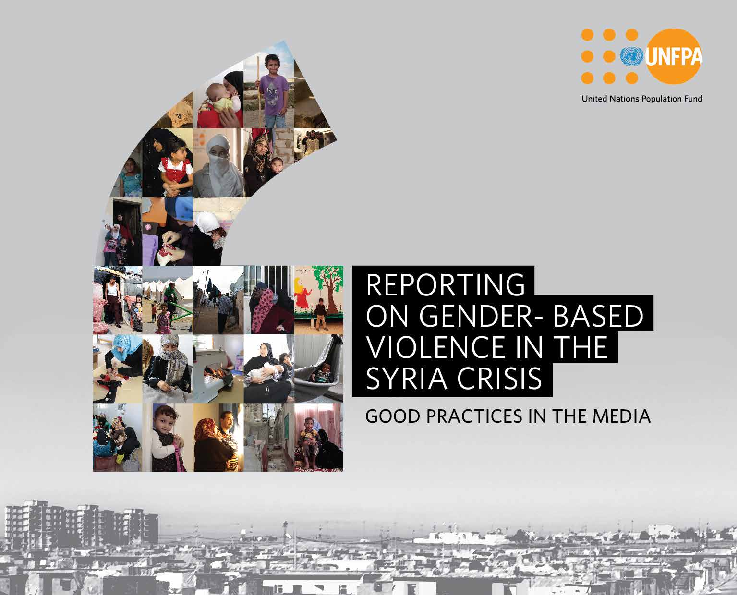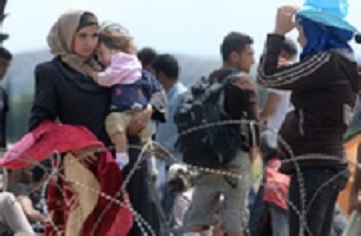You are here
New Releases

Reporting on Gender-Based Violence in the Syria Crisis: Good Practices in the Media
Despite the efforts and engagement of local and regional media in highlighting and denouncing gender-based violence against women and girls in the six countries most-affected by the Syrian crisis (Syria, Lebanon, Jordan, Turkey, Iraq and Egypt), the bulk of coverage still – whether directly or indirectly – attributes stereotypical and predictable social images to women and girls. They are often represented as "victims" of forced and early marriage, who are submissive to an oppressively patriarchal and conservative community. Reports often focus too much on the subjects rather than exposing the full extent of the human rights violations or the underlying root causes that allow these actions to emerge and maintain their prominence in the region.
Protection Risks for Women and Girls in the European Refugee and Migrant Crisis
For the first time since World War II, Europe is experiencing a massive movement of refugees and migrants, women, girls, men and boys of all ages, fleeing armed conflicts, mass killings, persecution and pervasive sexual and gender-based violence (SGBV). Many seek refuge in Europe from the ongoing armed conflicts that have torn apart their societies, and are entitled to protection under the 1951 Refugee Convention, its subsequent Protocol, and other international instruments. From January to November 2015, Europe witnessed 950,469 refugee and migrant arrivals through the Mediterranean, with Greece receiving the vast majority of arrivals (797,372). Those arriving by sea are fleeing the Syrian Arab Republic (49%), Afghanistan (20%), Iraq (8%), Eritrea (4%), Nigeria (2%), Pakistan (2%), Somalia (2%), Sudan (1%), Gambia (1%) and Mali (1%).
Humanitarian Bulletin Syria Crisis July - August 2015
UNFPA-assisted partners delivered around 400,000 reproductive health and gender-based violence-related services in Syria during the months of July and August 2015.

State of World Population 2015
We live in a world where humanitarian crises extract mounting costs from economies, communities and individuals. Wars and natural disasters make the headlines, at least initially. Less visible but also costly are the crises of fragility, vulnerability and growing inequality, confining millions of people to the most tenuous hopes for peace and development.
Regional Situation Report for Syria Crisis #40 - 1-31 December 2015
Highlights:
In the Syrian Arab Republic:
113,000 reproductive health services delivered to Syrian
57,269 Syrian benefit from reproductive health and gender-based violence related messages
106,500 beneficiaries of 67 reproductive health kits
13,600 dignity kits
Regional Situation Report for Syria Crisis #39 - 1-30 December 2015
In Syria, UNFPA delivers 298,272 services to Syrians affected by the conflict. These include safe delivery services for 5,674 women, reproductive health and gender-based violence-related awareness services for 16,000 people, outreach services for 20,000 beneficiaries, and the provision of 9,000 contraceptive and family planning counselings. UNFPA also distributes 27,824 packs of sanitary napkins, 8,380 female dignity kits, 4,122 male dignity kits, and carries out 6,420 gender-based violence awareness raising sessions.
Regional Situation Report for Syria Crisis #38 - 1-31 October 2015
While security continues to be an ongoing challenge in Syria, the country’s internal and global political atmosphere is also becoming more complex due to an external air intervention.
Regional Situation Report for Syria Crisis #37 - 1-30 September 2015
No major change in the map of influence was observed during the reporting period as clashes continued between the Government of Syria and armed opposition groups in the northern and southern parts of the country. Increased mortar and rocket shelling was reported on Damascus, Homs and Lattakia cities. Sanctions imposed on Syria continued to adversely impact the ability of economic and social sectors, including health, to better serve people during the crisis.
Regional Situation Report for Syria Crisis #35 - 1-31 July 2015
Violence has escalated in several parts of Syria. Of the 4.6 million people living in hard-to-reach areas, 422,000 remained besieged. This included 26,500 people besieged by non-state armed groups in Nebula and Zahra, and 228,000 people besieged by ISIL in the government-controlled western neighbourhoods of Deir-ez-Zor. The number of violence-affected people with limited access to life-saving reproductive health and gender-based services has continuously been on the rise.
Breaking the Silence
More than four years of war have ravaged Syrian families and communities. Syrian women and girls are living through the most damaging conflict in the region’s recent history. Female refugees are sometimes subjected to sexual violence, and more frequently suffer from harassment and abuse. Delivering their children can be dangerous. They often lack access to prenatal and post-natal care and emergency obstetric care if they need it. For the women of Syria the process of reintegration and recovery at the individual and community level will be long and complex.